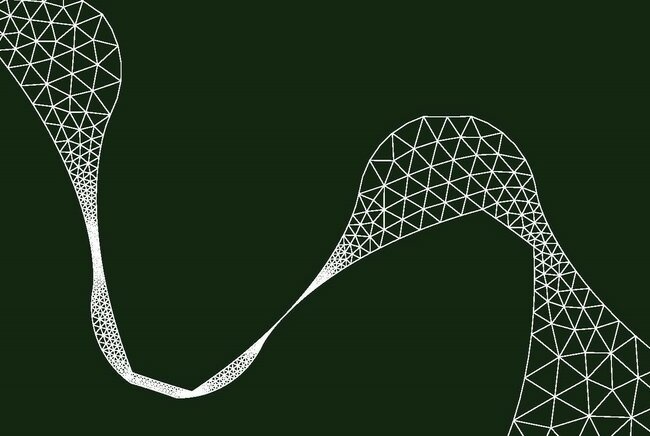Reducing production materials by performance analysis of gear pumps in polymer extrusion
Vincent de Bie defends his PhD on better understanding of how fluid properties influence the output of an external gear pump.

Extrusion using a gear pump is useful in production processes where temperatures must remain low, for example in the automotive industry to produce car tires. At too high temperatures, material properties change, becoming rigid and less fluid and therefore block the pump. PhD candidate Vincent de Bie has developed a numerical simulation to better understand and predict the effect of fluid properties. This makes it easier to experiment with such manufacturing processes via a computer, reducing the amount of material that needs to be processed to achieve an airtight tire.

Extrusion is a high-volume manufacturing process that is used for materials such as food, concrete, metal, and polymers. In sheet film extrusion, a strip is extruded that typically has a high width over height ratio. This is for example used in the automotive industry to produce car tires.
An external gear pump is sometimes added to the extrusion systems, to increase the pumping capabilities. A drawback of using this pump is the often observed fluctuation in the output. By numerically studying an external gear pump processing high-viscosity fluids using the finite element method, De Bie observed that besides the gear geometry, fluid properties strongly affect the output of the pump.
Fluctuation in the output of pumps
In the external gear pump, the separation of the gears creates a vacuum, which results in suction of the fluid into this space. The fluid is then trapped in the inter-teeth volumes when these are closed off by the casing of the pump. Within these volumes, it is transported to the other side of the gears.
Due to the intermeshing of the gears, the fluid is pushed out of the external gear pump. A high pressure is often observed at the exit, since the fluid is typically pushed through a narrow die opening. Many studies showed that a fluctuation is present in the output of the pumps.
This so-called ripple is mainly the result of the geometry of the gears, and thus its frequency is related to the number of teeth of a gear. Obviously, a ripple in the output is undesired, since this results in inconsistent dimensions in an extrusion process. Several studies attempted to numerically predict this ripple. However, most studies consider Newtonian fluids and turbulent flow. In a polymer extrusion process, the flow is typically laminar and fluid properties depend on deformation rate, pressure and/or temperature.
The goal of De Bie’s research was to perform fluid flow simulations of the external gear pump for high-viscosity fluids. He developed a numerical simulation using the finite element method, where the fluid model can be varied. De Bie and his research group wanted to understand the effect of fluid properties on the ripple and the efficiency of the pump. Therefore, they studied the effect of including a deformation-rate, pressure, and temperature dependence of the fluid properties.
To enable application of the simulations in the automotive industry, the reaction process of rubbers, i.e. vulcanization, is even modeled. Local (pre-)vulcanization during rubber extrusion can now be visualized. For these curing fluids, the residence time in the pump should be as low as possible. For this reason, the residence time can also be tracked using a convection equation or by particle tracking.
Periodic release of contact
Using 2D simulations, De Bie showed that the efficiency of the pump drops for low rotation speeds, fluids with low viscosities and high-pressure differences over the external gear pump. Furthermore, he observed unexpected zones with a high residence time in the entry channel of the external gear pump.
The extra information obtained by adding the third dimension is however limited, since the axial clearance in the pump is typically extremely narrow. If the rotation speed of one of the gears is added as an unknown to the simulation, then a periodic release of contact is observed for most viscous fluids studied in this project. A comparison with experiments is performed for two EPDM’s, where it appeared that a shear-rate, temperature and pressure dependence of the material properties are essential to obtain acceptable agreement with the experiments.
With his study, De Bie made a step towards understanding how fluid properties influence the output of an external gear pump. In future years, the current numerical simulations will be improved in terms of output predictions and computation time. Validation is needed with various materials in order to see for what kind of fluids, the current simulations are sufficient and when an extension is needed.
Vincent de Bie defended his thesis entitled ‘Performance analysis of external gear pumps in polymer extrusion’ on March 11th. He was supervised by prof.dr.ir. Patrick Anderson and dr.ir. Martien Hulsen
Media contact
Latest news


